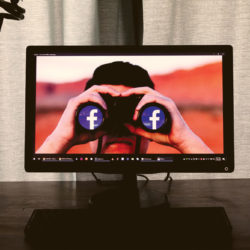If there’s a buzz phrase most brands and companies use these days, it’s “going digital”. A lot of organizations are talking about the importance of reaching their target markets not just out on the streets, but right on their laps or in the palm of their hands. The easiest way brands seize that opportunity is by utilizing social media. Even while people are out and about, their hands are still glued to their phones.
According to the London School of Economics, out of the 7.511 billion people on this planet, there are 3.811 billion internet users. Out of the 3.811 billion internet users, there are 2.895 active social media users. And out of that figure, there are 2.692 billion active social media users on mobile.
If you crunch the numbers, that’s a lot of people on social media. You also have to take into consideration that they’re not just passive users. They’re active users, which means that they actually go and interact with posts on the platforms.
The knee-jerk reaction of some brands would be to blast their messages far and wide on this platform in order to be seen by their target audiences. Some brands treat social media as a billboard or a personal forum just to be seen. Although this approach may be tempting to some, this doesn’t typically work.
The reason social media is compelling is because it isn’t like any other type of media out there. It isn’t a one way street where the audience members are mere receivers of the message and brands or companies can just keep pumping promotions out. On social media, the people have a voice. They can say anything they like with minimal repercussions. They can champion a brand to the point that they become loyalists and the brand barely needs to promote itself, or, they could burn a brand so bad that the brand immediately gets cancelled.
Another reason why social media is so important is because unlike other types of media, you can use creativity to craft your brand’s stories to tailor fit the medium you’re on. For example, your product is a coffee mug and the top three promotional platforms you’re on are Facebook, Instagram, and Twitter. For Facebook, the approach you can take is direct. You can list down all the product specifics and prices, as well as appealing pictures. On Instagram, you can take an artsy-er approach by posting aesthetically pleasing pictures of your coffee mugs with nice filters and tell stories with each photo you post. On Twitter, you can be a little more engaging with your audience by posting coffee memes and engaging with them by replying to their tweets.
Social media is a creative playground where brand stories can be turned into something more important, they can be turned into people’s stories. Well, that’s if you do it right.
Don’t just be on social media to be seen and heard. Social media isn’t an online billboard where you can post your promos and be done with it. Be on social media to make a genuine connection with your audience. Tell your brand’s story through the channels your target market appreciates.
References:
https://info.lse.ac.uk/staff/divisions/communications-division/digital-communications-team/assets/documents/guides/A-Guide-To-Social-Media-Platforms-and-Demographics.pdf

Andreiana Yuvallos is an Editorial Assistant at WorkWise Asia. She loves reading, writing, theatre, and baking on the weekends.





